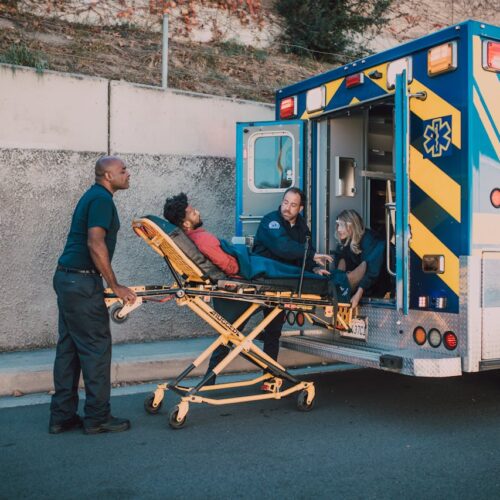
Foundations across the nation are investing hundreds of millions of dollars to support criminal justice system reforms that reduce incarceration, promote public safety, and improve individual and community well-being. The MacArthur Foundation’s Safety and Justice Challenge, for example, has invested $217 million over the course of five years to help communities achieve this goal.
Jurisdictions have used these grants and other foundation funding to make significant changes and bring about positive outcomes for their communities. But those initial funds are often time-limited or eventually run out. And when they do, communities need to be prepared to sustain and expand—or “scale up”—the activities that were jumpstarted by foundation funding.
Many communities struggle with bridging the gap to long-term sustainability, which ultimately enables initiatives to expand and adapt to evolving community needs. Financing the Future of Local Initiatives, a new set of tools from The Council of State Governments (CSG) Justice Center, was developed as part of the MacArthur Foundation’s Safety and Justice Challenge and walks counties through the planning process for sustainability and scaling. We recently piloted the tools in Lake County, Illinois.
“From Idea to Implementation”: Putting Financial Planning First
A team of Lake County criminal justice and behavioral health professionals sought to build on the work they had done through a Safety and Justice Challenge grant led by the Lake County Sheriff’s Office, wherein they developed a behavioral health diversion program called the Jail High Utilizer Program. Lake County also has a law enforcement deflection program called A Way Out, which was spearheaded by the Lake County Opioid Initiative and encourages people with substance use conditions to seek help at police departments without fear of arrest.
The county team’s goal was to leverage the success of the diversion and deflection programs by merging them into one location: a 23-hour stabilization unit for people in mental health crisis and with co-occurring disorders, where people can also receive assessments and referrals to inpatient residential services. The unit will not only serve people who have been referred by law enforcement and jail personnel, but also accept voluntary walk-ins from the community, thereby sustaining and expanding the impact of existing programs. County representatives arrived at the idea to launch this unit during a Sequential Intercept Model Mapping workshop, where they plotted out existing behavioral health services across Lake County and noted the need for a hub that would encompass the community’s full crisis care continuum—from urgent responses to intensive inpatient care.
From there, Financing the Future of Local Initiatives “helped take [the Lake County team] from idea to implementation,” according to Bruce Johnson, executive director of Nicasa, a local behavioral health services organization. The tools prompted the team to talk through the costs associated with establishing the new unit and to identify federal funding sources that could support those costs.
How They Did It: Building an Integrated Funding Strategy
Less than a year after the workshop that sparked the concept, Lake County has a concrete plan to fund the new crisis stabilization unit. They followed a series of steps to apply the tools and arrive at this plan:
Establish a core sustainability planning team. First, the county’s Safety and Justice Challenge research project coordinator, who works in the County Administrator’s Office, organized a core team to create a sustainability and scaling plan. Each of the core team members holds a leadership position within the county. The team includes the executive director of the Lake County Underage Drinking and Drug Prevention Task Force and the Lake County Opioid Initiative, as well as Bruce Johnson of Nicasa, which is the sole provider of substance use evaluations for people arrested in Lake County. During the initial planning stage, the principal decision-makers worked through the tools together to create a working draft of a sustainability and scaling plan that could then be presented to other stakeholders. The core team’s fluency in local strategic and financial information equipped them to build the plan, and their knowledge of the community enabled them to anticipate the perspectives of other stakeholders who weren’t present during these early stages. For example, core team members knew that other local leaders might have concerns about sharing their agency or program data that would inform setting targets for the unit, such as the number of people to be served by a given intervention. Therefore, the team decided to establish draft targets for the time being and will invite partners to an upcoming meeting, giving them an opportunity to weigh in on and solidify the targets themselves.
Develop and adhere to a work plan. The core sustainability planning team created a work plan to tackle the tools. They scheduled six 2-hour work sessions and created agendas in advance that included what to prepare before each meeting, what the team would accomplish during the session, and what would be coming up next. During each session, the team filled out the tools together using an online platform that enabled collaborative editing in real time. The Lake County team came out of this process with a fully documented funding plan that will take them through the next three years.
Lay the groundwork for the long term. The team’s funding plan helped them identify how much was needed to operationalize the crisis stabilization unit, with costs estimated at $500,000 per year. The planning process also enabled the team to find federal funding opportunities they could pursue to support case managers and peer specialists, such as the Substance Abuse and Mental Health Services Administration’s Healthy Transitions: Improving Life Trajectories for Youth and Young Adults with Serious Mental Disorders Program and the Department of Labor’s Support to Communities: Fostering Opioid Recovery through Workforce Development grant program. But a plan like this is only as good as its execution. Importantly, the core team identified representatives to participate in a sustainability committee that will be responsible for supporting and maintaining unit operations and funding once the planning stage is complete. They also developed goals for participant outcomes, process measures, and fundraising targets that they can track over time and report out to the community to maintain transparency and promote awareness of the project and its impact.
With the effective use of Financing the Future of Local Initiatives, the core team identified enough funding to proceed with plans to open the unit. Although initial opening plans have been delayed due to the coronavirus pandemic, the unit is scheduled to open in fall 2020.
Photo by InventorChris on Flickr
About the Authors


In response to growing calls for police reform in New Jersey, particularly following the shootings of Najee Seabrooks…
Read More Three Things to Know About New Jersey’s Groundbreaking Community Response Legislation
Three Things to Know About New Jersey’s Groundbreaking Community Response Legislation
In response to growing calls for police reform in New Jersey, particularly…
Read More Apply Now: Join a Learning Community for Community and Crisis Response Teams to Improve Responses to Youth
Read More
Apply Now: Join a Learning Community for Community and Crisis Response Teams to Improve Responses to Youth
Read More
 Apply Now: Join a Learning Community Focused on Substance Use and Overdose Community Response Programs
Read More
Apply Now: Join a Learning Community Focused on Substance Use and Overdose Community Response Programs
Read More













